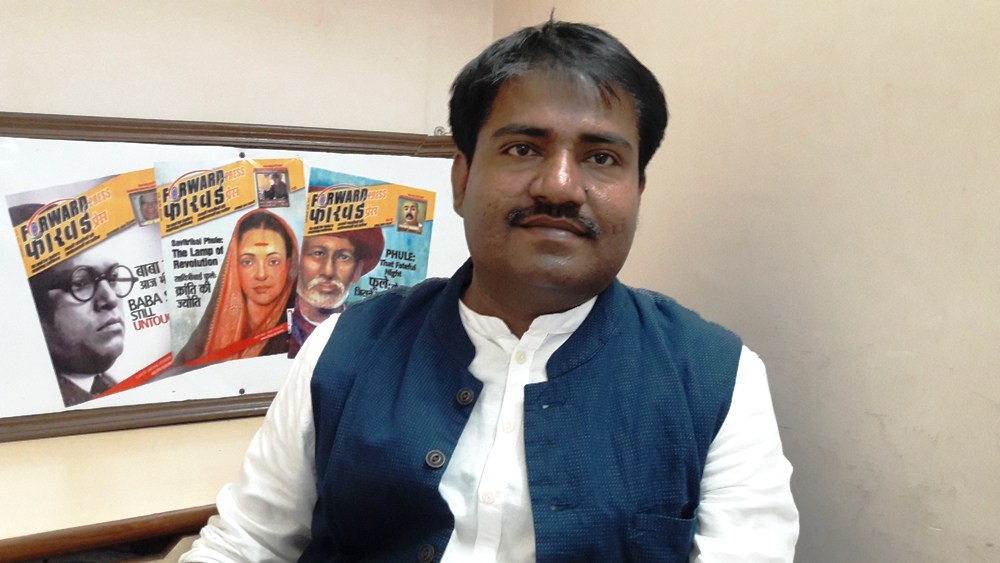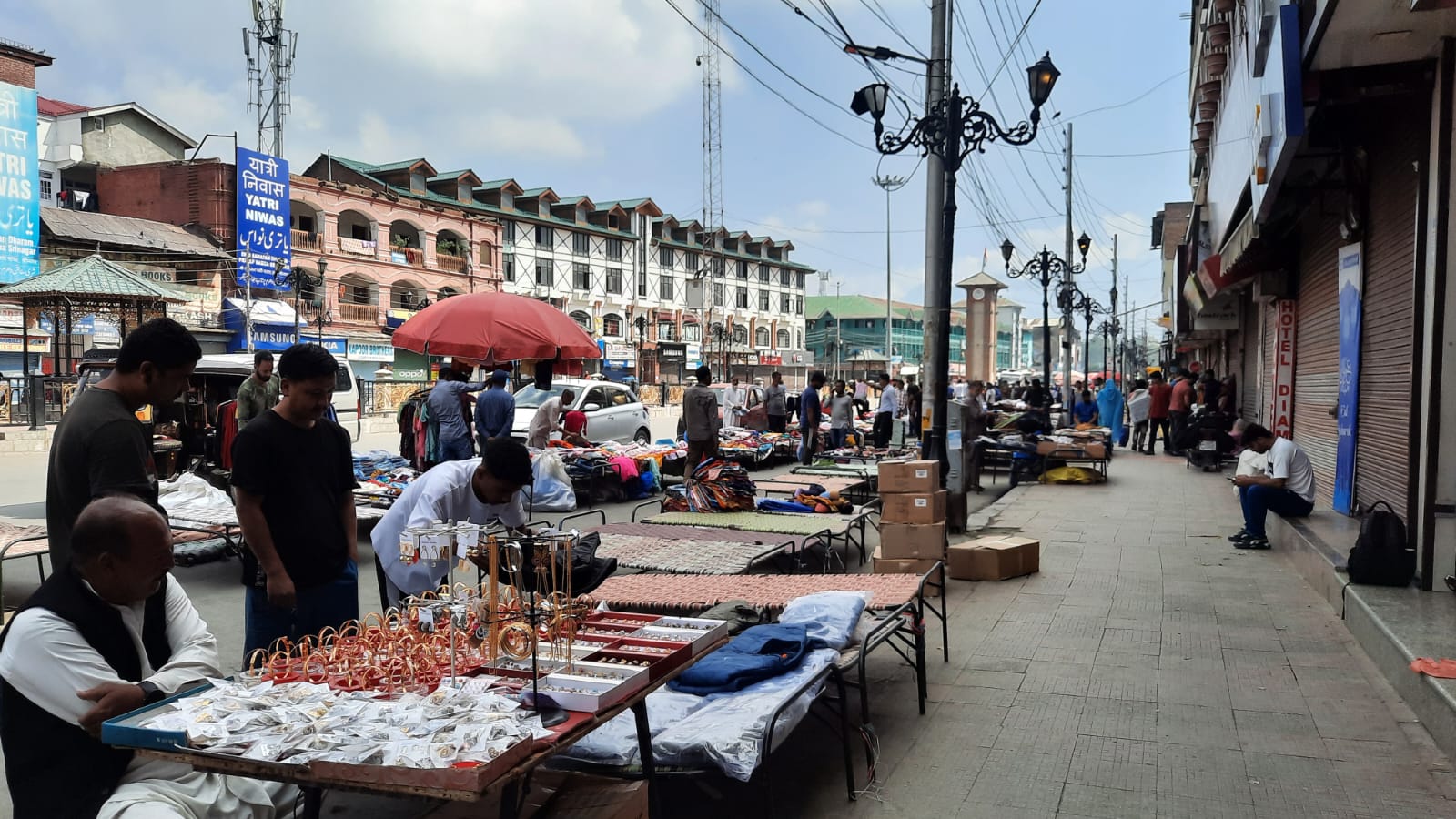Bihar Chief Minister Nitish Kumar’s expert moves have revolved around going against current political principles. Having achieved several milestones in matters of political expediency, he has

caught everyone off guard yet again. K.C. Tyagi, the national general secretary of Janata Dal (United), announced that the party would align with Bharatiya Janata Party in the upcoming presidential elections because the National Democratic Alliance’s candidate Ram Nath Kovind was the ‘most suitable candidate’ for president. There were no references in Tyagi’s official statement to Kovind being a Dalit. He also said that this decision of the party had no bearing on the ruling ‘grand alliance’ in Bihar.
A ‘Sanghi’ Dalit for president, say critics
NDA’s candidate Ram Nath Kovind’s ties to the RSS have grabbed the attention of those on the other side of the political divide. Manoj Jha, national spokesperson of Rashtriya Janata Dal (RJD), a key party in the opposition, brought this matter up and said the BJP was engaging in casteism by fielding Kovind. ‘The BJP insults Babasaheb Ambedkar and wants to replace the Constitution he drafted with Golwalker’s. On the one hand, it engineers violence against Saharanpur’s Dalits and on the other hand, by playing up Ram Nath Kovind’s Dalit-ness, the party wants to suppress the Dalit movement.”
However, it’s not on the opposition’s agenda to target Kovind’s ‘Sanghi Dalit’ credentials. But from his silence over the Gujarat riots in 2002 to his calling Dalit Christians and Muslims ‘aliens’, Kovind’s image has been that of a RSS supporter. He was a Rajya Sabha member for 12 years, yet only seven of his questions in Parliament had to do with Dalits and Adivasis. In fact, 98 per cent of his questions dealt with issues unrelated to Dalits and Adivasis.
Nitish Kumar spurns socialism for the third time

Nitish Kumar was born on 1 March 1951 in a village called Kalyanbigaha (Harnaut Block) in Bihar’s Nalanda district. His received his primary education in Bakhtiarpur, Patna district. Bakhtiapur, which now falls within the Patna Sahib constituency after the delimitation in 2009, used to be part of the Baad Lok Sabha constituency and it was here that Nitish Kumar began his political career. He was elected to the Bihar Assembly for the first time in 1985 from Bakhtiarpur. He remained an MLA until 1989, the year he was elected to the Lok Sabha for the first time. He had already become an influential political leader representing OBCs, second only to Lalu Prasad. After the death of Karpoori Thakur on 17 February 1988, Lalu Prasad had assumed total control of Janata Dal in Bihar. Nitish Kumar was like a younger brother to Lalu Prasad. Nitish Kumar benefited from this equation. He became a minister at the Centre for the first time when he was appointed the minister of state for agriculture in V.P. Singh’s government. Later, when elections in Bihar threw up a hung assembly, Nitish Kumar stood with Lalu Prasad. In fact, Nitish Kumar’s efforts played a major role in Lalu Prasad becoming chief minister. Nitish Kumar benefited from this act of benevolence too as Lalu Prasad helped him win the Baad parliamentary constituency again in 1991. Lalu also backed Nitish’s nomination as Janata Dal’s deputy leader in the Lok Sabha.
Dularchand Yadav the reason for the first parting of ways
However, in 1993, Nitish Kumar changed tack. The reason was his discord with Dularchand Yadav, a notorious criminal who was considered important in Baad’s politics. Nitish Kumar cut himself off from Lalu Prasad and launched his own politics. Despite his image of a socialist, he tried to ally with Communist Party of India (Marxist-Leninist) in 1995 but his dream of defeating Lalu Prasad remained unfulfilled. He couldn’t even win his own constituency. This is when Nitish Kumar went against popular politics and sided with the BJP. This move earned him a third parliamentary election victory in 1996.
Over caste census and reservation
The second time Nitish Kumar politically ‘betrayed’ Lalu Prasad was during 2013-2014, when he stayed away from the demands for a caste census. At the time, Nitish had already parted ways with BJP and his party was in power, unexpectedly, courtesy of RJD’s support. Jitanram Manji was the chief minister then, although he later launched his own party that became a BJP ally. Nitish Kumar also differed from Lalu Prasad on granting 33 per cent reservation to women in Parliament, assemblies and state legislative councils. Now, in the run-up to the presidential elections, Nitish Kumar has betrayed Lalu Prasad again. By extending support to the NDA candidate, he has left the UPA in tatters as it was trying to emerge as a strong contender for the 2019 elections.
‘RJD to continue on its secular path’

According to Manoj Jha, RJD’s spokesperson, the party has from the beginning been advocating secularism and socialism and when the opposition parties sat down to discuss the presidency, it stuck to this line. “The situation in the nation is such that the government adopts criminal silence on the Saharanpur riots, Mandsaur fails to prick up its ears, Rohith Vemula’s suicide note is erased from our memories, and a violent crowd encouraged by the those in power murders whoever comes in its way. Given this situation, we need at the Rashtrapati Bhawan such a person who can be trusted by even the last man in the queue to protect the Constitutional values at any cost, without letting Nagpur-based Sangh’s laws take precedence.”
What prompted this political shift?
This is surely the beginning of a new rift between RJD and JD-U. A major reason for this rift could be the controversies the central government is dragging Lalu Prasad and his family into on the basis of complaints made by senior BJP leader Sushil Kumar Modi. Nitish Kumar wants to prove that he himself is without blemish. It’s also possible that he now believes that 2019 is also going to be Modi’s year. Hence, it would make sense for him to remain Bihar chief minister. But he can’t depend on Lalu Prasad to secure his future at the helm, so he may have just pounced on this opportunity – this presidential election – to initiate a shift.
Forward Press also publishes books on Bahujan issues. Forward Press Books sheds light on the widespread problems as well as the finer aspects of the Bahujan (Dalit, OBC, Adivasi, Nomadic, Pasmanda) community’s literature, culture, society and culture. Contact us for a list of FP Books’ titles and to order. Mobile: +919968527911, Email: info@forwardmagazine.in)





